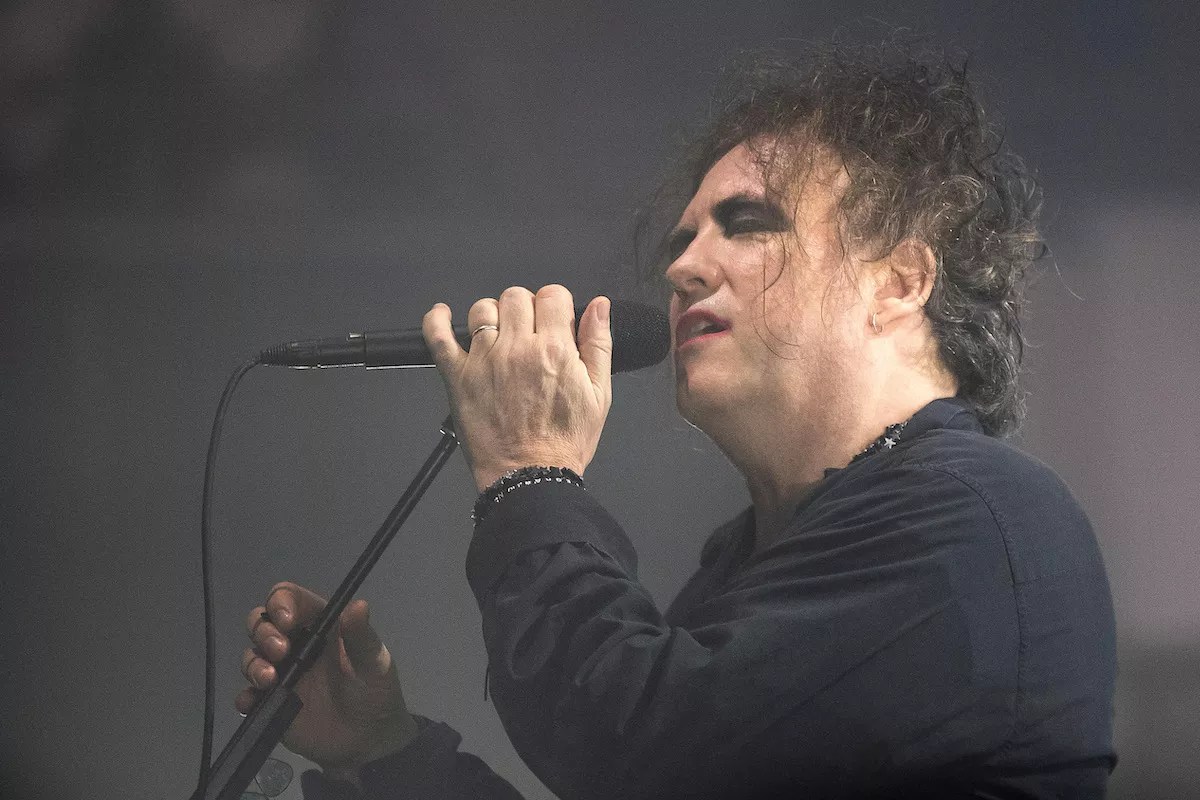
Photo by Mark Metcalfe/Getty Image

Audio By Carbonatix
For a band that has been playing arenas for three decades and crafting beloved songs for 45 years, we don’t know that much about the Cure. Compare them with their closest musical peers, U2, who, like the Cure, popped out of the late-1970s postpunk scene in the British Isles. Anyone can easily imagine Bono of U2’s Irish-accented speaking voice. Meanwhile, the Cure’s frontman Robert Smith might have an iconic image with his red lipstick, pale skin, and black-as-night hair styled in every direction, but we haven’t the slightest clue what his conversational voice sounds like.
While other acts of similar enormous stature have gotten political or become movie stars, the Cure is unique in that the band has grown and remained famous while keeping the focus entirely on the music. There are no Broadway jukebox musicals based on the Cure’s music, nor Bohemian Rhapsody-style bio-pics. We only have the records, music videos, and a North American tour that stops at the Kaseya Center in downtown Miami on July 1.
The Cure formed in England in 1978 when Smith was still a teenager. With the band’s first two singles, the Cure showed its versatility. The first, “Killing an Arab,” was both literary and gimmicky; the second, “Boys Don’t Cry,” a cherry bomb of kinetic energy, was a classic. Right from the start, the Cure caught your attention with outrageous titles and kept it with catchy riffs and lyrics open to countless interpretations.
The band’s sound matured through the 1980s, with the press unsure how to classify them. Was the Cure goth? New wave? College rock? Smith wasn’t going to give any answers. He was going just to keep writing songs.
In 1988, with “Just Like Heaven,” the band finally found success in the U.S. The music video – back then, the main way fans got to know a band – showed the rest of the band as stoic ciphers. Smith, however, does everything in his power to avoid the camera’s gaze. He turns his back. He obstructs himself, hiding behind his bandmates. Finally, the viewer gets a medium shot of his face in the second verse. Still, he never looks directly into the camera as he sings his words of undying love.
Being a rock star seems to be the polar opposite of being a sensitive introvert, but Smith managed the trick of being the rare figure who can hit both spectrums. The quality of the Cure’s music and this enigmatic image built the band a legion of devoted fans that could fill up a stadium, but that also inspired artists in other media. Neil Gaiman drew inspiration from Smith when conceiving the protagonist Dream for his classic comic book series The Sandman. Tim Burton supposedly was influenced by Smith when he filmed Edward Scissorhands, and many think the movie and comic The Crow were also based on Smith. The strongest of Smith-inspired media is probably the 2011 film This Must Be the Place, in which actor Sean Penn imitates Smith, except imagining him as the son of a Holocaust survivor looking for the Nazi who tortured his father.
How has an artist who has not revealed much about himself inspired so many more characters than his higher-profile peers like Bono and Morrissey? Perhaps the answer lies in a lesson young teachers are taught: You better reveal a little bit of yourself in the classroom, or the kids will make up their own stories about you.
The Cure. 7 p.m. Saturday, July 1, at Kaseya Center, 601 Biscayne Blvd., Miami; 786-777-1000; kaseyacenter.com. Tickets cost $20.25 to $245.25 via ticketmaster.com.